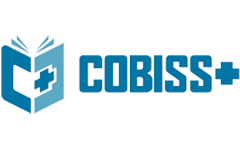Study and analyze the results achieved from adopting and implementing the learning Strategy together to understand and comprehend the Science subject (chemistry) for the second intermediate grade
DOI:
https://doi.org/10.61841/hyy85k29Keywords:
Learning, Strategy together, ChemistryAbstract
The current research aims to study and analyze the results achieved from adopting and implementing a learning strategy together to understand and comprehend the science subject (chemistry) for the second intermediate grade by verifying the following null hypothesis:
There is no statistically significant difference at the level of 0.05 between the average scores of the experimental group students who study the science subject according to the learning strategy together and the average scores of the control group students who study the same subject in the usual way.
The research sample consisted of 44 students from the second intermediate grade, 21 students for the experimental group that studied science according to the learning strategy together, and 23 students for the control group who studied in the usual way.
The researcher was rewarded between the two groups of research in the variables (age in months, previous academic achievement in the science subject for the first intermediate grade, parental achievement).
The researcher prepared the teaching plans for the topics of the second and third semesters of the science textbook for the second intermediate grade.
The two groups studied for a period of (4) weeks, and after completing the teaching, the achievement test was conducted for the students of the research sample, and the results indicated that there were statistically significant differences between the average achievement of students who studied science using the learning strategy together and the average achievement of students who study science in the usual way in favor of the experimental group. In light of the research findings, the researcher recommended a number of recommendations, including:
1. The constant involvement of teachers in courses, seminars, and lectures with educational goals related to modern methods of teaching.
2. Training science teachers on how to use learning strategies together in teaching.
3. Conducting similar studies on larger samples and in a varied study item.
Downloads
References
1. Emtanios, Michael, Measurement and Evaluation in Modern Education, Damascus University of Damascus, 1997.
2. Badri, Fawzia al-Haj Ali, Education between originality and contemporary concepts—goals—philosophy, the uncle said, the House of Culture Publishing and Distribution, 2009, 1.
3. Thaer Abu Khaled and powdered ritual, educational psychology, and classroom applications, Oman, the Arab community to publish a library and distribution, i1, 2008.
4. Al-Khalili, Khalil Ibrahim, and Abdul Latif Hussain Haidar, Teaching Science in General Education Stages, United Arab Emirates, Dar Al-Qalam, i1, 1996.
5. Al-Rubaie, Najla Mahmoud Hussein, The Effect of Using the Cooperative Learning Method on the Achievement of Second-Grade Female Students, Institute for Teacher Preparation and Development of Their Attitudes towards General Sciences, Master’s Thesis, Baghdad 1999.
6. Samara, Nawaf Ahmad and Abd al-Salam Musa Al-Adili, Concepts and Terms in Educational Sciences, Amman, Al-Masirah House for Publishing and Distribution, 1I,
7. Sheikh, Sami Saleh Ahmad, comparing the impact of the strategy of cooperative learning and learning according to the traditional method on the achievement of fifth-grade students in basic science, Amman, 1993.
8. Abdel Hadi, Nabil Ahmed, Contemporary Educational Models, Amman, Wael House for Printing and Publishing, 2000.
9. Aziz Hanna Anwar Hussein Abdel-Rahman, Educational Research Methods, Baghdad, Dar al-Hikma, i1, 1990.
10. Attia Abdel-Hamid, Statistical Analysis in Social Work Studies, National Library and Documents, 2011.
11. Amira, Ibrahim Bassiouni, and Fathi El-Deeb, Teaching Science and Scientific Education, Dar Al Maaref, 1967.
12. Fatima Khalifa Matar, The Effect of Using Cooperative Learning in Teaching a Unit in Directed Movement on the Emotional Aspects of Students in the Teacher Education Program, The Arab Journal of Education, Issue D (1) 1992.
13. Farah Taha and others, Dictionary of Psychology and Analysis, Beirut, Dar Al-Nahda Al-Arabiya, 1987.
14. Khabla Pour, Methods of Teaching Education (Part Two), Damascus University Publications, 2010.
15. Al-Nashik, Salma Zaki, Scientific Concepts, Amman, House of Curricula, 2008.
16. Nawfal Mohammed Bakr Free of Mohammed Abu Awad, Educational Psychology, Amman, Dar march for publication and distribution, i1, 2011.
17. Al-Harmzi, Janet Maysan Matti, The Effect of Using Cooperative Learning in Changing Students' Perceptions of the Sixth Grade Basic Biological Concept—Organs of the Body, Master Thesis, College of Graduate Studies, University of Jordan, 1995.
18. Battistich, S. (& others), "Instruction Processes and Student Outcomes in Cooperative Learning Groups," The Elementary School Journal, vol. 51, No. 4, Apr. 1993.
19. Johnson DWf Johnson (2000), "Cooperative Learning Methods: An Analysis of the Internet University of Minnesota."
20. Kagan S., Cooperative learning resource for teachers (Riverside California University, 1989, 241).
21. -Krishnan, the SR "In the Change Conceptual chemistry full The - -r Ough Coope Rative Problem The So Lving," Pisserta Tion Abstructs International, vol. 52, No. (5), Join Date : Jun, 1991.
22. -Thamas.R. Lord, "Using Cooperative Learning In The Teaching Of the High School Biology," The American: Biology Have Teachers, vol. 56, 1994.
23. -Matirn, M. & Schlette, "Teach Your Best" Handbook for University Lectures": Dissertation Abstracts International, Vol. 56, No. 7, Jul. 1995.
Downloads
Published
Issue
Section
License
Copyright (c) 2025 AUTHOR

This work is licensed under a Creative Commons Attribution 4.0 International License.
You are free to:
- Share — copy and redistribute the material in any medium or format for any purpose, even commercially.
- Adapt — remix, transform, and build upon the material for any purpose, even commercially.
- The licensor cannot revoke these freedoms as long as you follow the license terms.
Under the following terms:
- Attribution — You must give appropriate credit , provide a link to the license, and indicate if changes were made . You may do so in any reasonable manner, but not in any way that suggests the licensor endorses you or your use.
- No additional restrictions — You may not apply legal terms or technological measures that legally restrict others from doing anything the license permits.
Notices:
You do not have to comply with the license for elements of the material in the public domain or where your use is permitted by an applicable exception or limitation .
No warranties are given. The license may not give you all of the permissions necessary for your intended use. For example, other rights such as publicity, privacy, or moral rights may limit how you use the material.
















